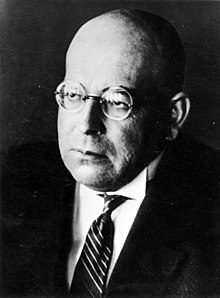 A new Age of Miracles is upon us. For those not familiar with the works of Spengler, he had an idea that civilizations work in cycles. You have an Age of Miracles when all is wonderful, the woods are full of elves and it wouldn't surprise you in the slightest to meet a god on the way home.
A new Age of Miracles is upon us. For those not familiar with the works of Spengler, he had an idea that civilizations work in cycles. You have an Age of Miracles when all is wonderful, the woods are full of elves and it wouldn't surprise you in the slightest to meet a god on the way home.Then you have the Age of Theology, during which all the sightings of the gods from the Age of Miracles are categorised and analysed and formalised and explained, and generally have all the magic taken out of them. And thus theology leads you to logic and logic leads you to an Age of Science.
In the Age of Science everything is logical and nothing is magical and this, according to Spengler, creates a great human thirst for something divine, which is why the Age of Science suddenly cracks, and the world is plunged back into an Age of Miracles, and the whole jolly cycle can start again.
Spengler used to be terribly fashionable, back during the World Wars when it looked as though civilization was really ending. And then even more so during the Sixties when it looked as though something completely new was starting up. But then the 1980s happened, and it was generally agreed that there would be no new miracles and that Mr Spengler had been wrong.
But now it turns out that Spengler was right. You see, I wrote in A Christmas Cornucopia that all true Christmas trees should contain a snake, because of the Christmas Tree's origin in the Paradise Plays of Medieval Germany. I even mentioned one Mrs Coulson of Swindon, who in the year 2000 found an adder in her tree. I even referred to it as a miracle, but as the last miracle.
Well, I was wrong and Spengler was right. The BBC reports that a lady in Australia has found a highly venomous tiger snake hiding in her Christmas Tree. Clearly a new Age of Miracles has begun. Why it should have begun in Australia, I don't know. Clearly God has a sense of humour.
And in case you were wondering what Christmas in Australia normally looks like, here's an illustration from 1881.
Riddled with kangaroos
N.B. Before anyone else points it out, that was a very, very, very rough summary of Spengler's ideas.









Hello - I very much enjoyed your Christmas Cornucopia and drove everyone mad on Christmas Day spouting facts about Christmas trees, calendars and everything else. "A Visit from St Nicholas" is one of my favourite poems but for very long boring reasons I am too embarrassed to go into, I did some research into it and it appears that (according to the god that is Wiki) it may have been written by Henry Livingston not Clement Clarke Moore. You didn't mention this in your book and I wondered if you had heard or researched this? Thanks!
ReplyDeleteAs an utter history and mythology junkie, I'm intrigued. Would you say the ideas you attribute to Spengler would be better discovered through reading the Decline of the West or Man and Technics?
ReplyDelete